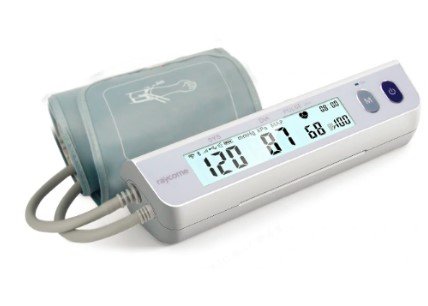Adapting Phlebotomy Practices for Non-Invasive Prenatal Genetic Testing in the United States
Summary
- Medical laboratories in the United States are incorporating non-invasive prenatal Genetic Testing into their services to meet the growing demand from patients and Healthcare Providers.
- Phlebotomy practices are being adapted to collect blood samples for non-invasive prenatal Genetic Testing in a safe and efficient manner.
- Training and certification programs for phlebotomists are being updated to include education on non-invasive prenatal Genetic Testing procedures.
Introduction
Medical laboratories in the United States play a crucial role in providing diagnostic testing services to patients for a variety of medical conditions. With advancements in technology, there has been a rapid increase in the demand for non-invasive prenatal Genetic Testing, which allows Healthcare Providers to screen for genetic disorders in a fetus without the need for invasive procedures such as amniocentesis or chorionic villus sampling. This article will explore how medical laboratories are adapting their phlebotomy practices to accommodate the growing demand for non-invasive prenatal Genetic Testing.
Non-Invasive Prenatal Genetic Testing
Non-invasive prenatal Genetic Testing (NIPT) is a screening test that uses cell-free fetal DNA found in the mother's blood to analyze the risk of a fetus having certain genetic conditions, such as Down syndrome, trisomy 18, and trisomy 13. NIPT is typically recommended for pregnant women who are at increased risk of having a child with a genetic disorder, such as women over the age of 35 or those with a family history of genetic conditions.
Benefits of NIPT
- Highly accurate results
- Low risk of miscarriage compared to invasive procedures
- Can be performed as early as 10 weeks of pregnancy
Challenges of NIPT
- Cost may not be covered by insurance
- False positives can occur, leading to unnecessary anxiety
- Does not provide a definitive diagnosis, may require further testing
Adapting Phlebotomy Practices
Phlebotomists are healthcare professionals trained to draw blood from patients for medical testing. As the demand for non-invasive prenatal Genetic Testing increases, medical laboratories are adapting their phlebotomy practices to ensure that blood samples are collected safely and efficiently for NIPT.
Specialized Training
Phlebotomists are receiving specialized training on how to collect blood samples for NIPT to ensure the accuracy of Test Results. This training includes learning about the specific procedures and protocols for handling blood samples for NIPT and understanding the importance of proper sample collection techniques.
Educational Programs
Medical laboratory educational programs are updating their curriculum to include information on non-invasive prenatal Genetic Testing and how it impacts phlebotomy practices. This ensures that future phlebotomists are equipped with the necessary knowledge and skills to collect blood samples for NIPT.
Integration of Technology
Medical laboratories are integrating technology into their phlebotomy practices to streamline the process of collecting blood samples for NIPT. This includes using electronic medical records to track patient information and results, as well as utilizing specialized equipment for blood collection.
Certification Programs
Phlebotomists are required to be certified in order to practice in the United States. Certification programs are updating their requirements to include education on non-invasive prenatal Genetic Testing procedures to ensure that phlebotomists are knowledgeable and skilled in collecting blood samples for NIPT.
Continuing Education
Phlebotomists are encouraged to participate in Continuing Education programs to stay up-to-date on the latest advancements in phlebotomy practices, including those related to non-invasive prenatal Genetic Testing. This allows phlebotomists to enhance their skills and provide high-quality care to patients.
Regulatory Compliance
Medical laboratories must adhere to strict regulatory standards set by organizations such as the Clinical Laboratory Improvement Amendments (CLIA) to ensure the quality and accuracy of Test Results. Phlebotomists are trained to comply with these standards when collecting blood samples for NIPT.
Conclusion
Medical laboratories in the United States are adapting their phlebotomy practices to accommodate the increasing demand for non-invasive prenatal Genetic Testing. By providing specialized training, updating educational programs, integrating technology, and enhancing certification requirements, phlebotomists are well-prepared to collect blood samples for NIPT in a safe and efficient manner. As advancements in technology continue to expand the capabilities of medical laboratories, phlebotomists will play an essential role in meeting the evolving needs of patients and Healthcare Providers.

Disclaimer: The content provided on this blog is for informational purposes only, reflecting the personal opinions and insights of the author(s) on the topics. The information provided should not be used for diagnosing or treating a health problem or disease, and those seeking personal medical advice should consult with a licensed physician. Always seek the advice of your doctor or other qualified health provider regarding a medical condition. Never disregard professional medical advice or delay in seeking it because of something you have read on this website. If you think you may have a medical emergency, call 911 or go to the nearest emergency room immediately. No physician-patient relationship is created by this web site or its use. No contributors to this web site make any representations, express or implied, with respect to the information provided herein or to its use. While we strive to share accurate and up-to-date information, we cannot guarantee the completeness, reliability, or accuracy of the content. The blog may also include links to external websites and resources for the convenience of our readers. Please note that linking to other sites does not imply endorsement of their content, practices, or services by us. Readers should use their discretion and judgment while exploring any external links and resources mentioned on this blog.
